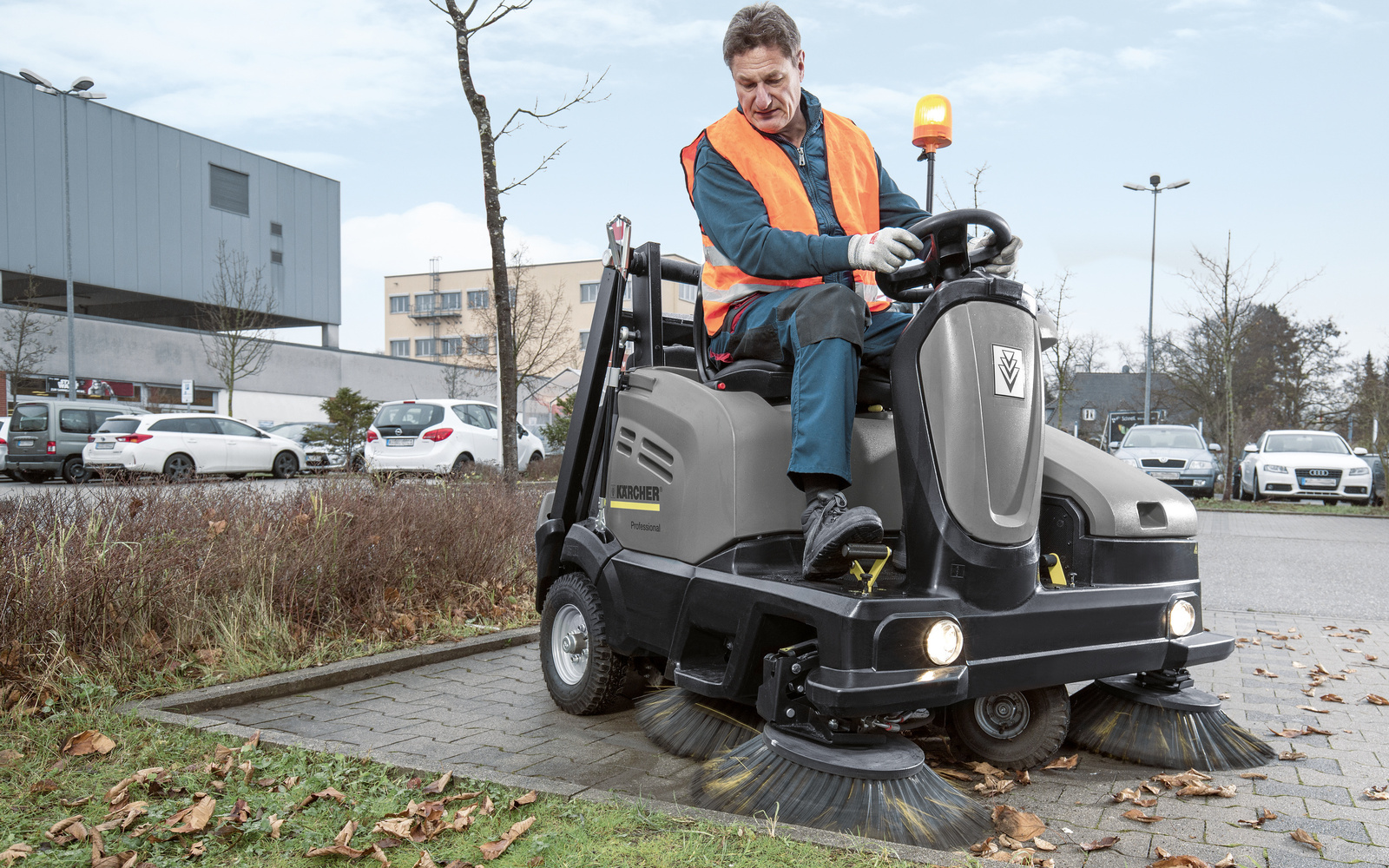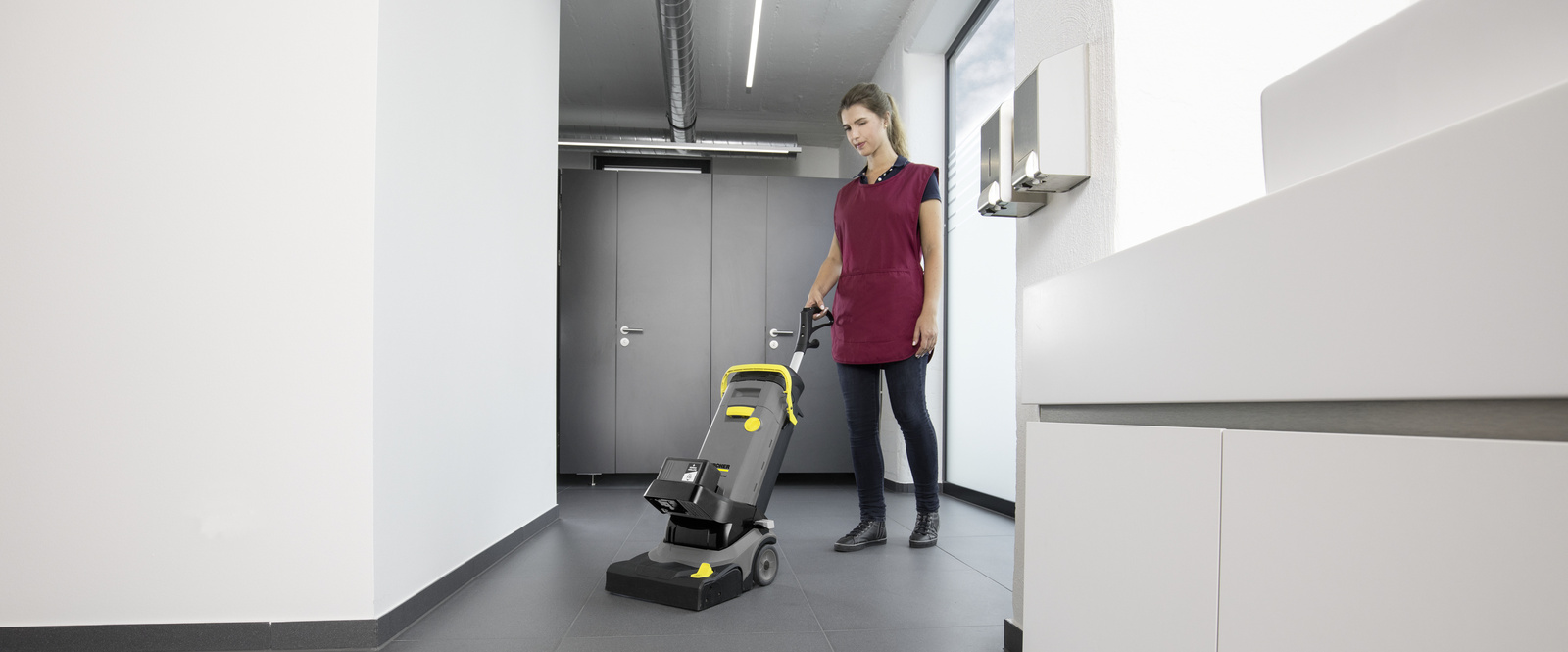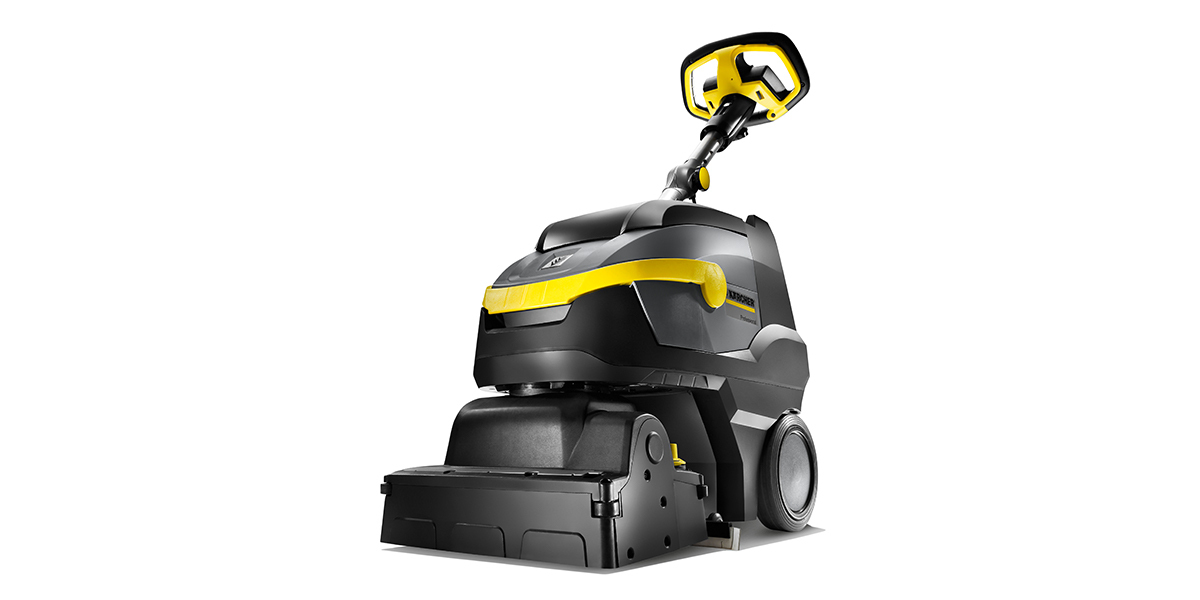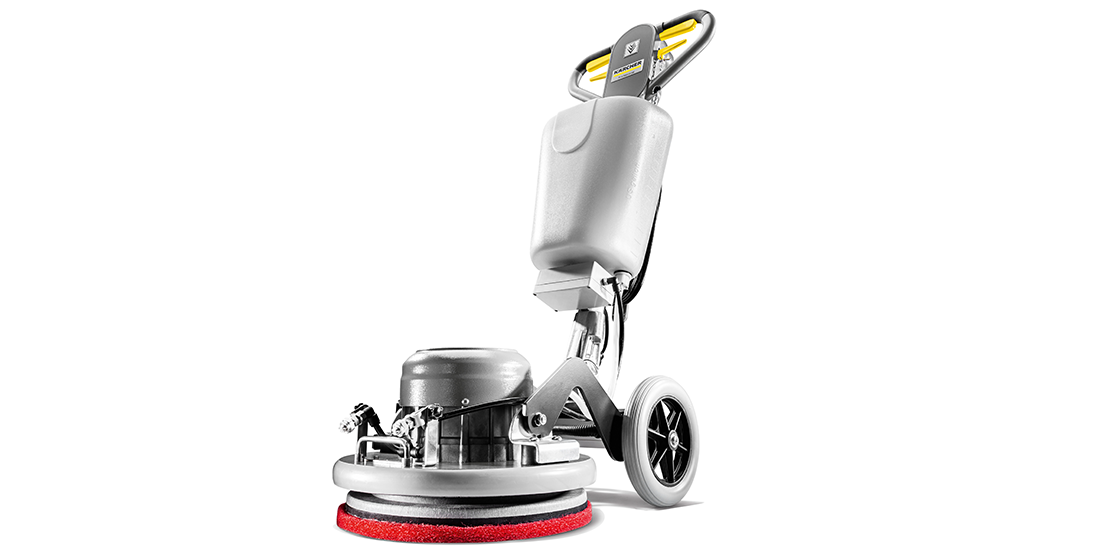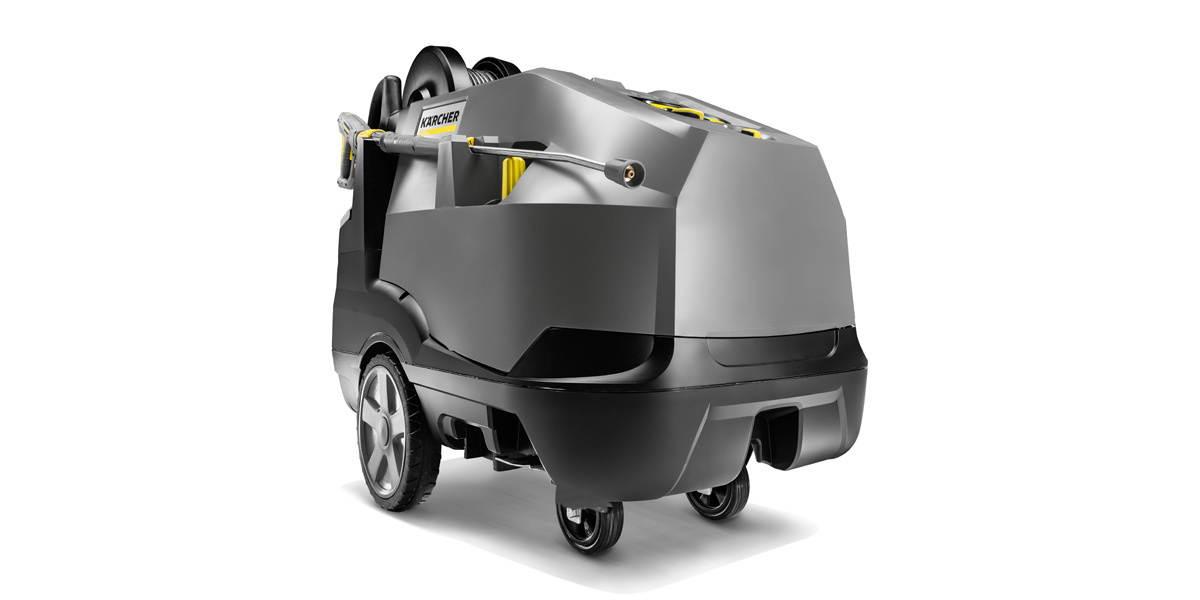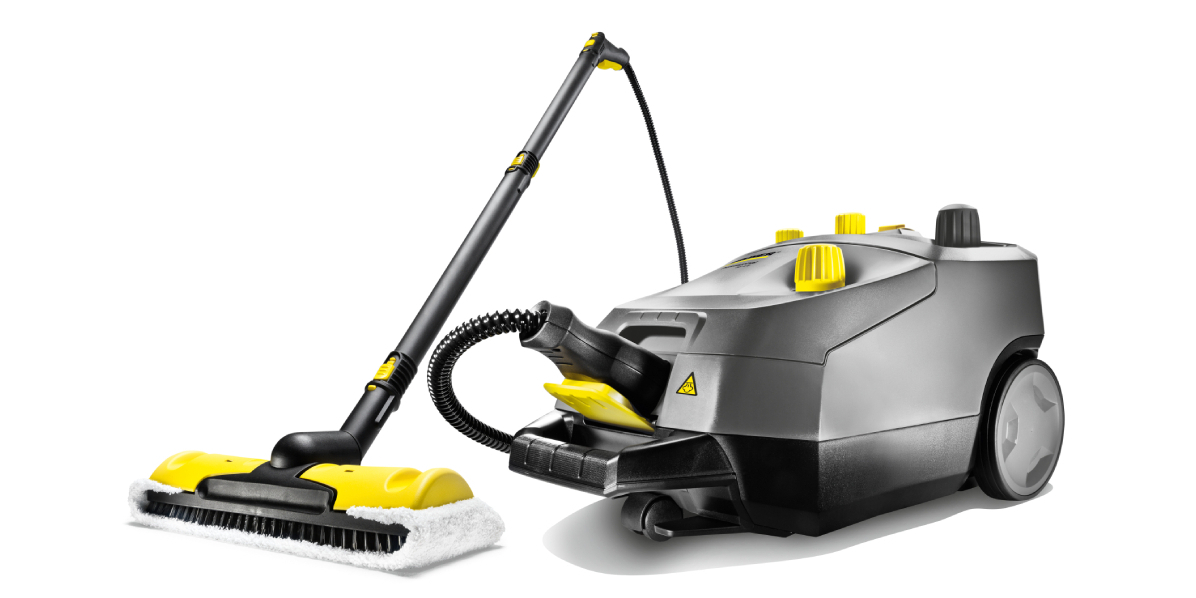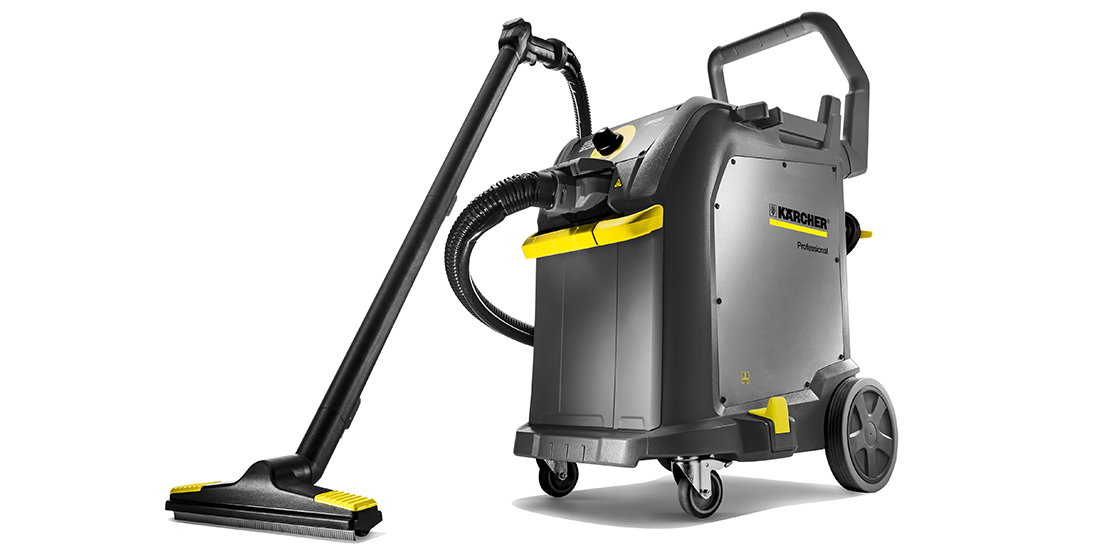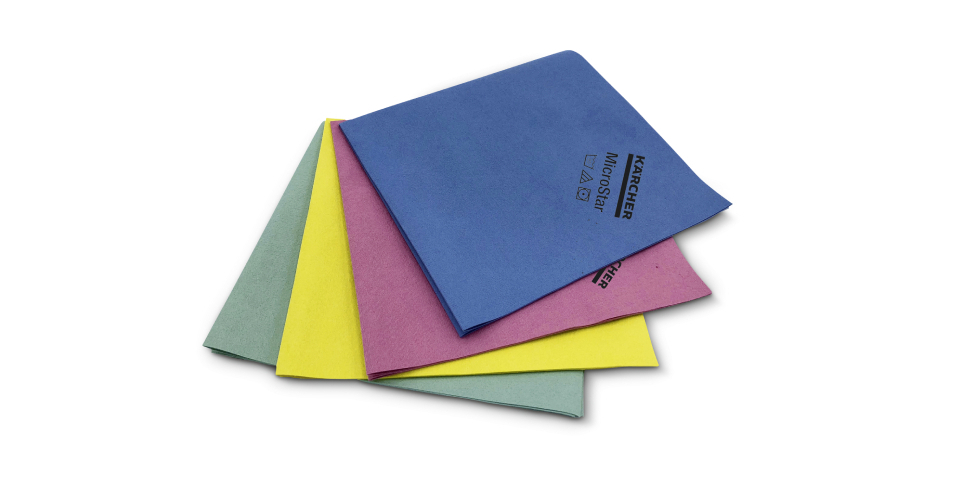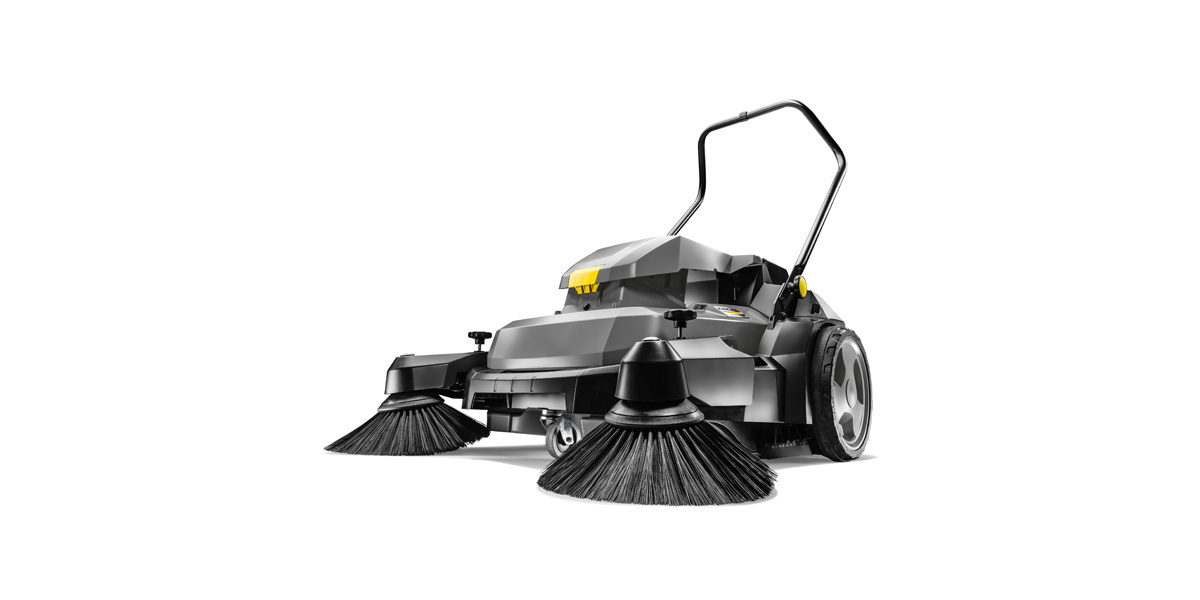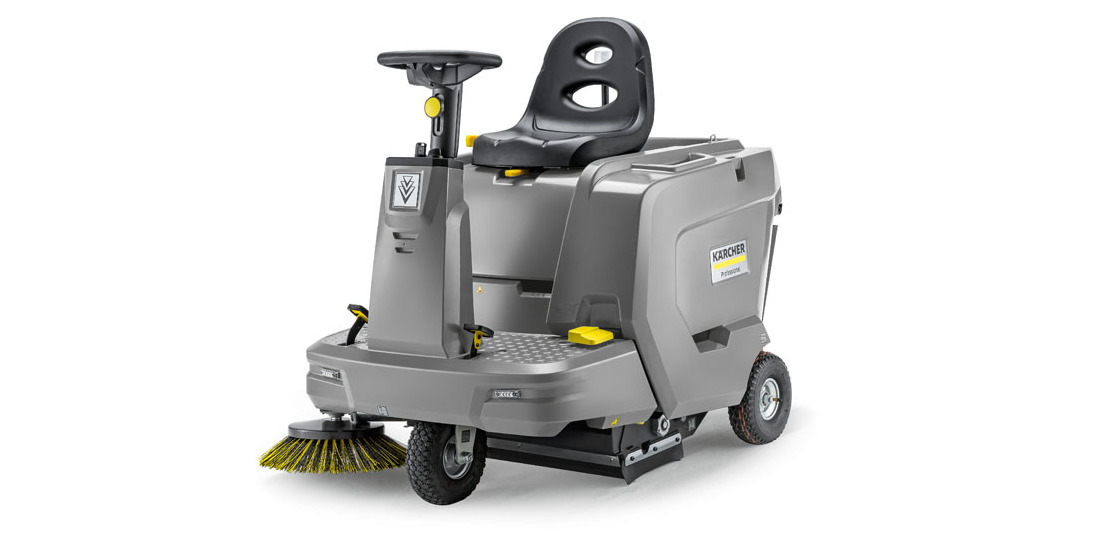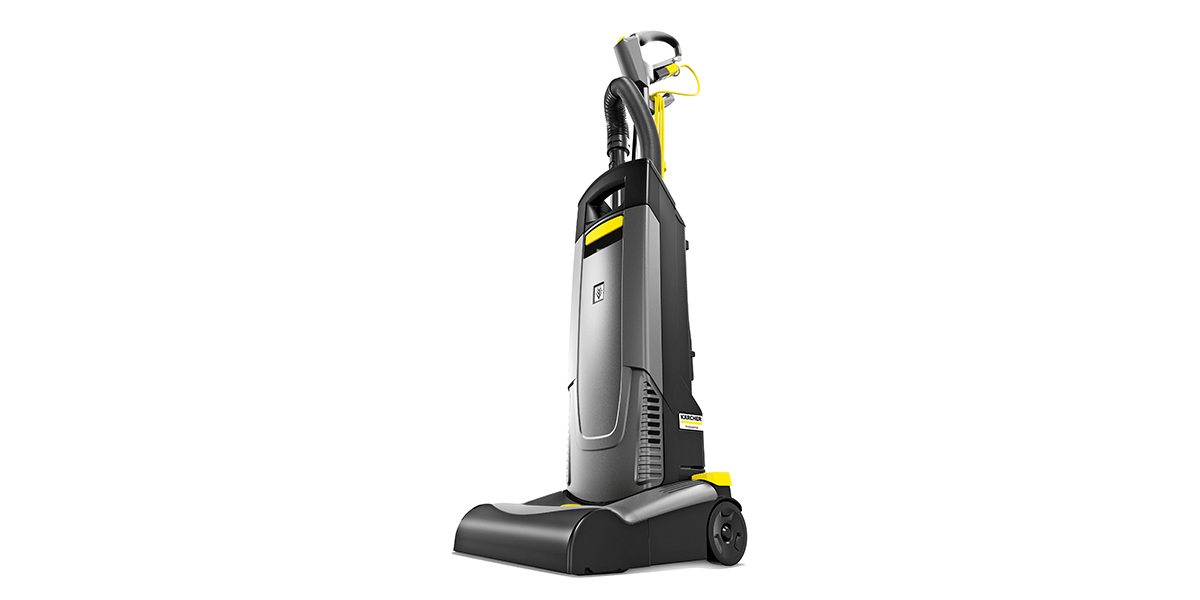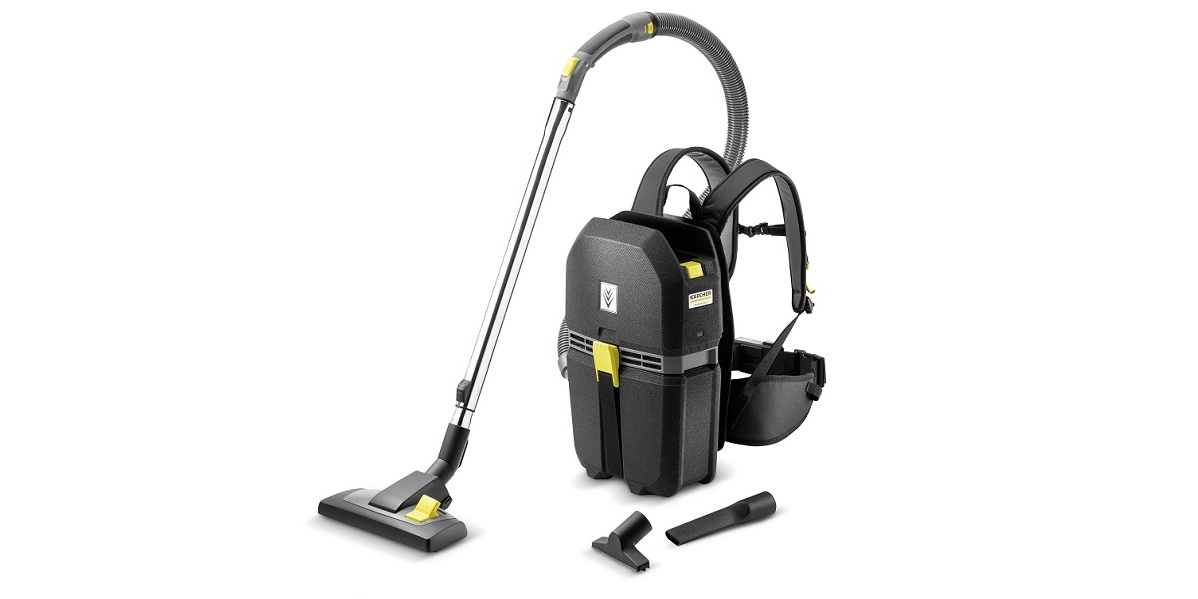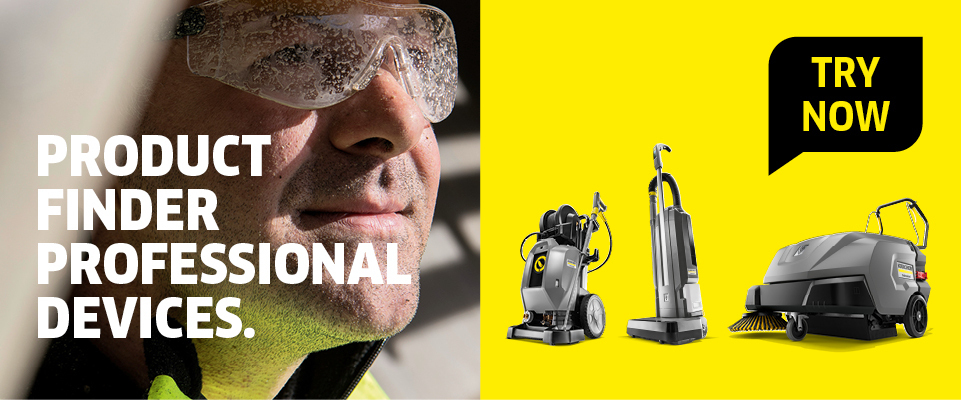Cleaning swimming pools and spa areas
Operators of swimming pools, thermal baths and spas are facing a number of challenges: sky-rocketing energy prices, a shortage of skilled labour and a broad range of cleaning tasks. At the same time, the window of time available for cleaning is narrow because many jobs can only be done outside of opening hours. To save time and money while keeping cleaning tasks as efficient and environmentally friendly as possible, it is important to have the right technology and processes in place. This often means that the cleaning staff can even dispense with extra disinfection stages, without fungi etc. spreading.
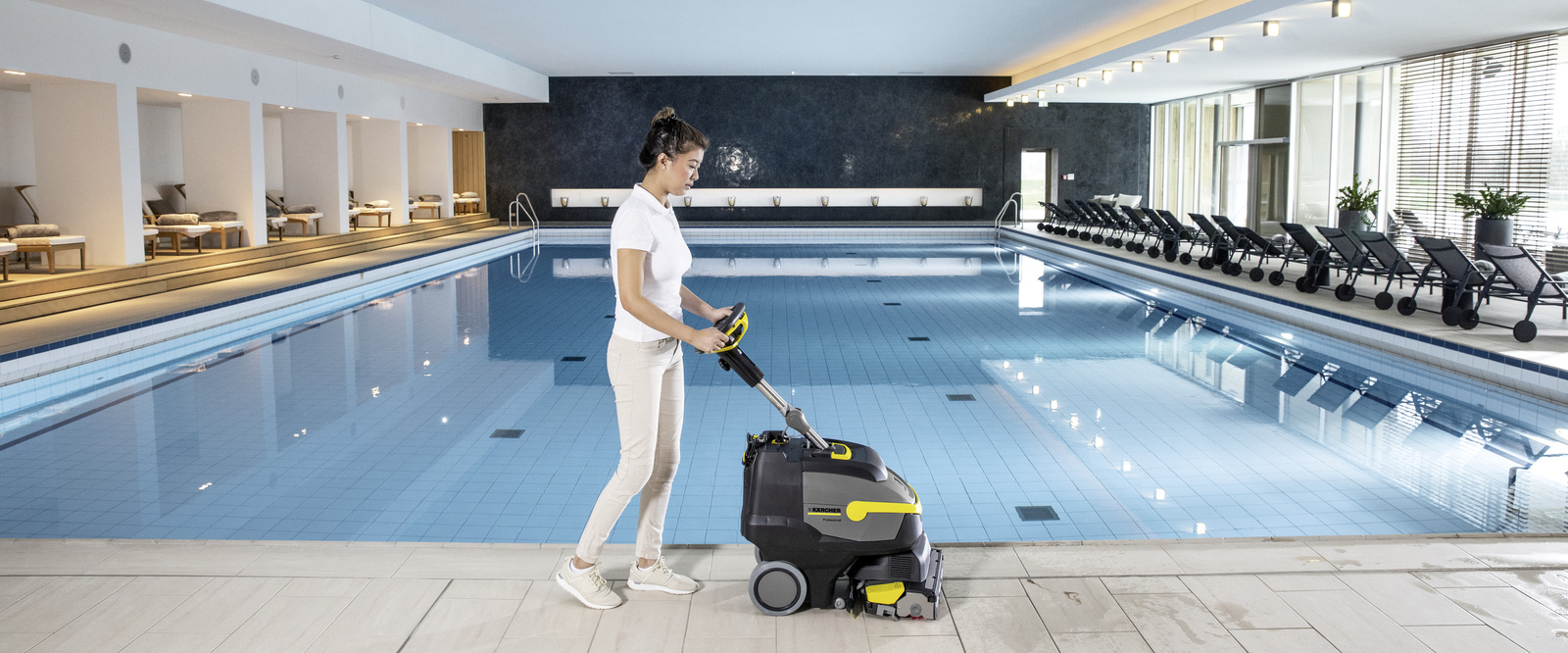
Cleaning indoor and outdoor facilities
To make bathers feel comfortable from the very first moment, the outdoor areas and entrances should make a positive impression. But cleanliness is about more than just making a venue look good. Battery-powered backpack vacuums are helpful in tight spaces.
First impressions counts: clean outside whatever the weather
Not only is a well-maintained outside area visually appealing to guests arriving, it also serves to reduce the amount of dirt getting into the building. Push sweepers and ride-on models are great for picking up loose dirt, dust and sand from car parks, roads and paths. To quickly, quietly and conveniently clear leaves from the outside area, battery-powered leaf blowers or leaf vacuums are recommended. In the event of snowfall, the right tools for the job of clearing snow depend on the amount of snow that has fallen. A snow shovel is normally sufficient for manual work. A small 26 hp snow thrower can cope with larger amounts of snow.
Welcome to a feel-good paradise: cleanliness from the moment guests enter
As guests cross the threshold, high-quality, absorbent dust control mats extend a cosy, warm welcome. But that's not all these mats do: they also reduce the amount of dirt entering the building. Electric brooms or upright brush-type vacuum cleaners are an ideal choice for picking up loose dirt and dust from the mats. When conditions get wet, a wet and dry vacuum cleaner is needed to clean up damp dirt. The hard floors indoors need to be cleaned daily with dust mops or vacuum cleaners. Ingrained dirt can be removed quickly and efficiently with a spray mop system.


Tip 1 – Do not neglect any entrances:
In addition to the main entrance, any delivery entrances or staff doors should be kept clean too, to reduce the amount of dirt that gets walked in.
Tip 2 – Scrubber dryers for polished floors:
For larger areas with polished stone surfaces, it is worth investing in a scrubber dryer to restore the shine to the floors.
Cleaning outdoor spaces, paths and car parks
Whether dining in a restaurant, shopping in a supermarket, furniture store or shopping centre, or visiting a doctor's surgery or a museum – often the first thing guests do upon arrival is to park their car and make a short walk to the building. There are a number of cleaning methods that can be used to make a positive impression right from the start, to prevent the risk of accidents and to stop dirt being brought in from outside.
Battery-powered backpack vacuum for lockers, etc.: lightweight, agile, powerful
To make maintenance cleaning in tight spaces such as lockers and changing cubicles as quick, user-friendly and efficient as possible, battery-powered backpack vacuums are a great choice. Lightweight models with a high container volume and long battery life that allow long work intervals are recommended. It is also important that ergonomically shaped carrying frames can be adjusted to the specific user to save their energy and minimise physical strain.
Tip – Versatile backpack vacuums:
Battery-powered backpack vacuums are also a practical solution for areas such as stairs or lifts.
Cleaning in barefoot zones of the swimming pool
In areas where guests walk barefoot, as well as toilet facilities and washrooms, it is vital that the right processes, the right technology and the right accessories are used for maintenance cleaning. Often, this can remove the need for disinfection altogether.

Barefoot confidence: goodbye to fungi and other microorganisms
Without the protection offered by clothing, our perception of hygiene changes. What may be deemed acceptable when fully dressed can set alarm bells ringing in the sauna and surrounding areas. In barefoot zones especially, cleanliness is essential to prevent the spread of filamentous fungi that can cause athlete's foot and nail fungus. To remove the breeding ground for these unwanted guests, acidic and alkaline detergents should be used alternately. Extra care is required, however, when dealing with joints containing cement: these are sensitive to acid and should therefore be rinsed thoroughly prior to cleaning with acidic cleaning chemicals, to prevent damage to the joints. Best of all, with the right cleaning processes in place, there is usually no need to disinfect the surfaces once they are cleaned. This benefits the environment, reduces costs and saves valuable time. This makes life easier for the cleaning staff, who start work after closing time and, if necessary, set to work early in the morning, since so many of their tasks cannot be completed while visitors are using the facilities.
Tip – Step-by-step cleaning:
Rooms with underfloor heating must be cleaned gradually so that the higher floor temperatures do not dry off the cleaning water straight away.
Full power and the perfect accessories: scrubber dryers and single-disc machines for the floor
Using the right technology can remove the need for disinfection after floor cleaning, which both helps protect the environment and saves time. Scrubbers or scrubber dryers with roller or oscillation technology give floors a lasting clean thanks to their mechanical power – without any subsequent disinfection process. Achieving the target cleaning result without risking any damage, however, comes down to choosing the right brushes or pads for the machines. Tiles with a rough texture scrub up particularly well with the use of high/low roller brushes, while fine-textured tiles need microfibre rollers. Melamine resin pads paired with a single-disc machine are the ideal combination for tackling stubborn dirt and already greyed fine stoneware tiles.
Tip 1 – Cleaning tile surfaces:
Since thermal water contains more minerals, which can leave deposits on surfaces, tiles generally need to be cleaned more frequently and more intensively. However, non-slip tiles are not compatible with pads, since they have a coarse abrasive grain. This is because the pads could gradually smooth out the tile's surface, creating a slip hazard.
Tip 2 – Remove condensation:
Although condensation on glass panes does not contain any minerals, the panes can nevertheless become saturated and start to look cloudy. Though harmless in terms of hygiene, this does look unsanitary. This clouding effect can be prevented by regularly drawing off the water from the glass.
Tip 3 – Change the flow direction:
To prevent any detergent entering the pool, the flow direction of the drainage at the pool edge must be reversed during cleaning.
Pick a colour, fold, pretreat: preventing cross-contamination in toilet facilities and washrooms
The colour-coded system is a simple yet effective way of preventing cross-contamination during surface cleaning in toilet facilities and washrooms. Red cleaning textiles and buckets are used for toilets, urinals and splash areas. Yellow, meanwhile, is intended for other tiled areas, as well as washbasins, taps, mirrors and shower cabins. To prevent streaks from forming when cleaning mirrors, we recommend using suitable microfibre cloths together with a ready-to-use glass cleaner. With the cloth-folding method, the cleaner also uses pretreated cleaning cloths and folds these in half two or three times. Each surface is then wiped over with a fresh side of the cloth. Once all sides have been used, the old cloth is discarded and replaced with a fresh one.
A microfibre mop system is a practical and user-friendly solution for wet cleaning small areas of flooring. By having several pretreated mop covers ready and to hand, there is no need for a bucket of water and detergent. This saves time, simplifies floor cleaning and eliminates the chance of germs being transferred by dirty water.

Cleaning changing rooms and toilet facilities
There are many reasons why careful cleaning is required in toilet facilities and washrooms: depending on the setting, toilets, showers and changing rooms in office buildings, production facilities, hotels, restaurants, sports halls or shopping centres are used by many people. This inevitably leads to people's skin coming into contact with various different surfaces that have been touched by practically all users of the facilities – including door handles, taps or toilet flush buttons. Consequently, microorganisms can pass from one person to the next. This must be prevented by means of defined cleaning sequences.
Tip 1 – Ventilate regularly:
To prevent mould growth, especially in the damp and warm environment of the toilet facilities and washrooms, sufficient and regular ventilation must be ensured.
Tip 2 – Remove mould:
If black mould develops in joints containing cement, this is best tackled with oxygen-releasing agents. If, however, silicone joints become mouldy, usually the only option is to replace them.
Tip 3 – Remove flash rust:
Flash rust on stainless steel surfaces can be removed with sanitary cleaners with a phosphoric acid base.
Clean surfaces in the swimming pool
Disinfection or steam cleaners can prevent the transfer of germs, especially in particularly vulnerable areas. For certain cleaning tasks, high-pressure cleaners are an effective tool.
Intensive surface cleaning (1): scrubbing and wiping disinfection
There are many surfaces in a spa facility or indoor pool that come into direct contact with the skin: walls, benches, loungers and changing cubicles, for example. Manual cleaning with disinfection is required to ensure germs are kept at bay. This is where the method known as scrub-wipe disinfection comes into play. Firstly, any visible dirt is mechanically removed. Next, a disinfectant based on an oxygen-releasing agent should be used as it does not stain wood. When it comes to disinfection, the old adage applies: as much as necessary, but as little as possible.
Intensive surface cleaning (2): with steam and pressure
Depending on the available space, a steam cleaner is an ideal solution for an intensive clean of the walls in shower cabins or benches in saunas. For larger areas, lint-free terry cloths or microfibre cloths in combination with a large floor nozzle work well. High-pressure cleaners can be used for cleaning toilet facilities, showers, walls, floors, anti-slip mats and tiled benches. However, the user should be trained in how to use the equipment properly.
Tip – Keep your distance:
In order to avoid damage, the nozzle should not be held too close to the surfaces when using the high-pressure cleaner.
Suitable products for your area of application
Find a wide range of technology at lightning speed – with the Kärcher Professional product finder
In no time at all, we'll show you the exact Kärcher Professional machine that best suits your specific cleaning task.

